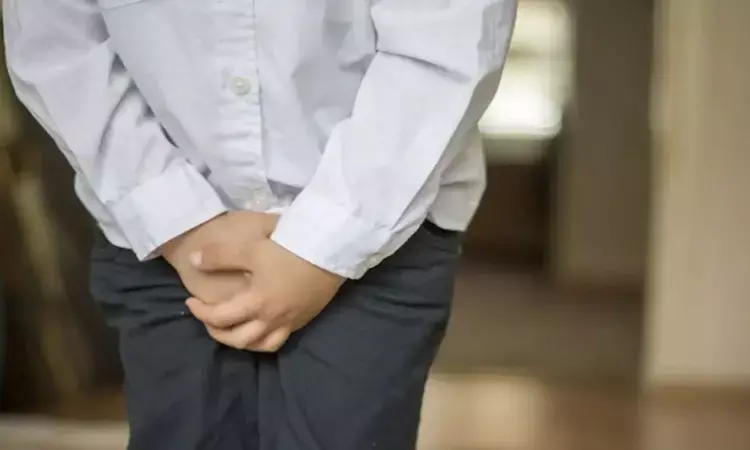- Home
- Medical news & Guidelines
- Anesthesiology
- Cardiology and CTVS
- Critical Care
- Dentistry
- Dermatology
- Diabetes and Endocrinology
- ENT
- Gastroenterology
- Medicine
- Nephrology
- Neurology
- Obstretics-Gynaecology
- Oncology
- Ophthalmology
- Orthopaedics
- Pediatrics-Neonatology
- Psychiatry
- Pulmonology
- Radiology
- Surgery
- Urology
- Laboratory Medicine
- Diet
- Nursing
- Paramedical
- Physiotherapy
- Health news
- Fact Check
- Bone Health Fact Check
- Brain Health Fact Check
- Cancer Related Fact Check
- Child Care Fact Check
- Dental and oral health fact check
- Diabetes and metabolic health fact check
- Diet and Nutrition Fact Check
- Eye and ENT Care Fact Check
- Fitness fact check
- Gut health fact check
- Heart health fact check
- Kidney health fact check
- Medical education fact check
- Men's health fact check
- Respiratory fact check
- Skin and hair care fact check
- Vaccine and Immunization fact check
- Women's health fact check
- AYUSH
- State News
- Andaman and Nicobar Islands
- Andhra Pradesh
- Arunachal Pradesh
- Assam
- Bihar
- Chandigarh
- Chattisgarh
- Dadra and Nagar Haveli
- Daman and Diu
- Delhi
- Goa
- Gujarat
- Haryana
- Himachal Pradesh
- Jammu & Kashmir
- Jharkhand
- Karnataka
- Kerala
- Ladakh
- Lakshadweep
- Madhya Pradesh
- Maharashtra
- Manipur
- Meghalaya
- Mizoram
- Nagaland
- Odisha
- Puducherry
- Punjab
- Rajasthan
- Sikkim
- Tamil Nadu
- Telangana
- Tripura
- Uttar Pradesh
- Uttrakhand
- West Bengal
- Medical Education
- Industry
Interstitial cystitis like symptoms in LUTS patients could be due to bladder outlet dysfunction: Study

Taiwan: Men with lower urinary tract symptoms (LUTS) similar to interstitial cystitis (IC) diagnosed as interstitial cystitis/bladder pain syndrome (IC/BPS) may have both bladder outlet and bladder dysfunction, resulting in a hypersensitive and painful bladder, says a recent study in International Urology and Nephrology.
"The interstitial cystitis-like symptoms in LUTS patients might, in part, originated from bladder outlet dysfunction rather than the bladder alone," Hann-Chorng Kuo, Buddhist Tzu Chi Medical Foundation, Hualien, Taiwan, and colleagues wrote in their study.
In men, LUTS similar to IC/BPS are difficult to diagnose, and has poor treatment outcomes. The researchers aimed to investigate clinical characteristics and videourodynamic study (VUDS) parameters, pathophysiology, and treatment outcomes in men with IC-like LUTS.
Assessment of men with frequency, urgency, dysuria, and bladder pain initially diagnosed as IC/BPS by ESSIC criteria was done to rule out other lower urinary tract diseases (LUTD) by voiding diary, digitorectal examination, urinalysis, VUDS, and cystoscopic hydrodistention. VUDS and cystoscopic findings were the basis for subsequent treatments for LUTD and specific treatment for IC/BPS. Clinical VUDS characteristics and treatment outcomes were compared with those of women with IC/BPS.
The study led to the following findings:
- Seventy consecutive men (median age 54.5 years) were enrolled.
- The median maximum bladder capacity under cystoscopic hydrodistention was 650 mL (IQR 495–763) and glomerulation grade was 2 (1.0–2.0).
- The patients had moderate anxiety and depression severity; 49% had improved treatment outcomes.
- On VUDS, 42 (60%) patients had variable LUTD, including detrusor overactivity (n = 14), bladder neck dysfunction (n = 15), dysfunctional voiding (n = 3), and poor relaxation of the external sphincter (n = 24); also, 22 (31.4%) had a previous bladder outlet procedure.
- The self-reported treatment outcome was significantly better for patients with vs. without LUTD.
The researchers wrote, "men with IC-like LUTS diagnosed as IC/BPS may have bladder outlet dysfunction as well as bladder dysfunction, causing a hypersensitive and painful bladder."
"The IC-like symptoms in the patients with LUTD might, in part, originated from bladder outlet dysfunction rather than the bladder alone," they conclude.
Reference:
Yu, WR., Chang, WC. & Kuo, HC. Clinical presentation, videourodynamic characteristics, and treatment outcome in men with interstitial cystitis-like lower urinary tract symptoms. Int Urol Nephrol (2022). https://doi.org/10.1007/s11255-022-03294-2


